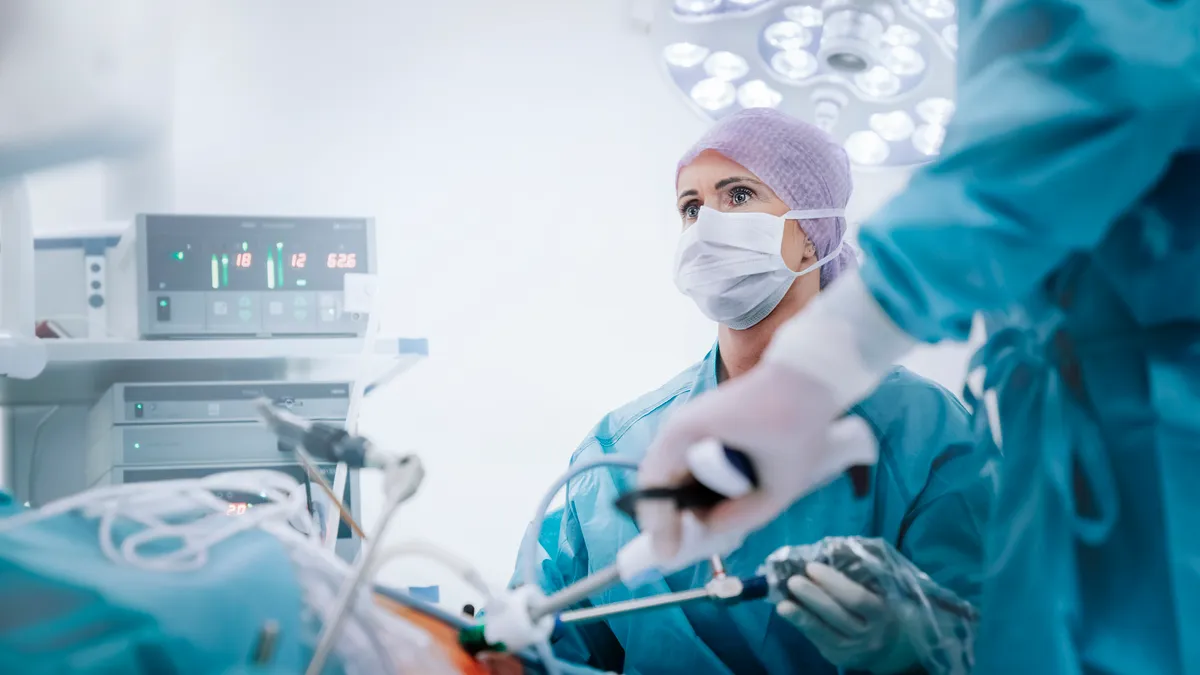Dive Brief:
- Researchers and physicians at the University of Pittsburgh have developed an automated machine learning model that can identify patients who are at high risk for complications after surgery, according to a study published Friday in JAMA Network Open.
- The model outperformed a popular tool used to calculate surgical risk that was developed by the American College of Surgeons. While the established calculator requires clinicians to manually enter data, the model automatically reads the records of people scheduled for surgery and flags high-risk patients.
- Clinicians at 20 University of Pittsburgh Medical Center (UPMC) hospitals are using the model to identify high-risk patients and inform the coordination of care and prehabilitation activities.
Dive Insight:
Complications in the 30 days after surgery are a leading cause of death globally. Before the pandemic, postoperative complications trailed heart disease and stroke on the list of the top causes of death. The situation has created a need for ways to identify which patients awaiting surgery are at risk of being one of the 4.2 million people globally who die each year in the 30 days after a procedure.
Many U.S. hospitals use the American College of Surgeons’ National Surgical Quality Improvement Program (ACS NSQIP) to identify high-risk patients. However, the calculator can only make a prediction if clinicians manually provide all of the requested information.
“Identifying high-risk patients can be challenging for busy clinicians, who have to integrate the wealth of health data available and frequently perform additional testing and clinical assessments. We wanted to build an easy-to-use model that provides the health care team with an automated and accurate risk assessment quickly using existing data,” UPMC’s director of perioperative and surgical services, Aman Mahajan, said in a statement.
Recognizing an opportunity to automate the process, researchers at the University of Pittsburgh and UPMC used machine learning to train a model to identify high-risk patients. The team tested the algorithm on the medical records of 1.25 million surgical patients, and then used it clinically to evaluate the risk of 206,000 patients at UPMC.
On a scale that runs from zero to one, with higher numbers indicating better predictions, the machine learning model scored 0.945, compared to 0.897 for ACS NSQIP. The Pitt and UPMC collaborators want to train the model to predict the likelihood for sepsis, respiratory issues and other complications that often keep patients in the hospital after surgery.











